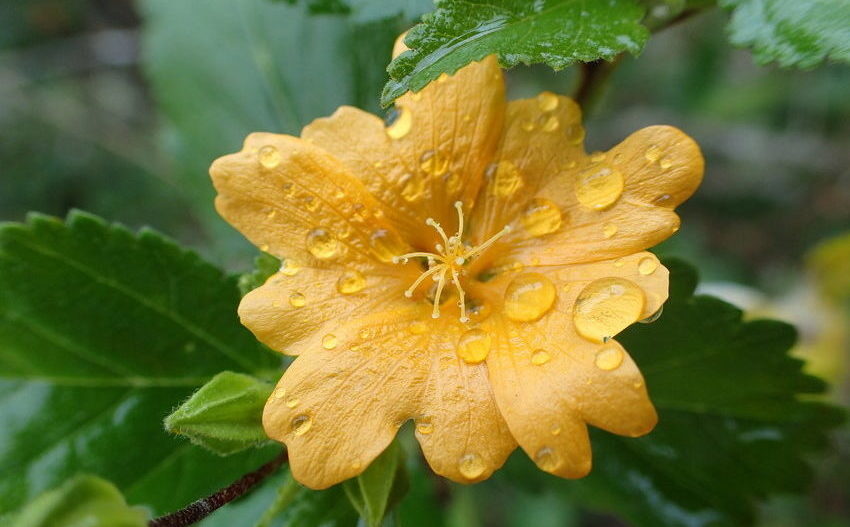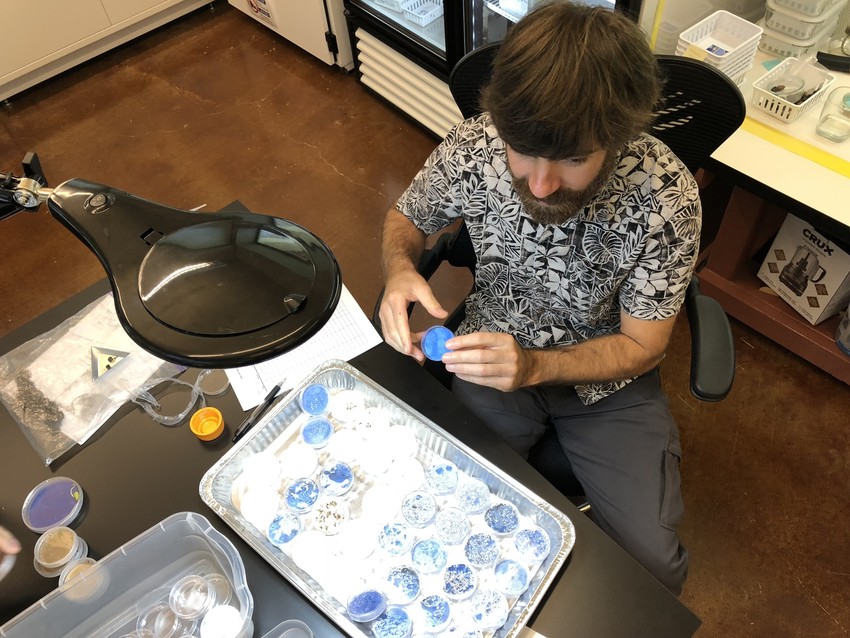Coastal plants may provide some of our best defenses against the impacts of climate change. However, rising sea levels, shifts in rainfall and storm surge are taking a toll on native coastal ecosystems in Hawaii. To better understand how rising sea levels may affect native and non-native plant life, NTBG scientists and collaborators are studying the effects of increased seawater exposure on seed germination and plant development. When you support National Tropical Botanical Garden with a gift to the Growing Green campaign, you help fund critical research and new knowledge that prioritizes restoration efforts to save both plants and people.
Hawaii is well-known for its picturesque beaches and dramatic seaside cliffs, but there are more than just stunning views to discover along the tradewind-swept coastlines of this tropical archipelago. Tucked into jagged volcanic rocks and snaking along sandy dunes is a world of coastal beauty elegant in form and critical in function.

Thick creeping ground covers and shrubs provide habitat for nesting seabirds, stabilize sandy soil and mitigate erosion. Many of the colorful, diminutive flowers found along Hawaiian coastlines provide food for insects and birds and are used in cultural ceremonies and lei making. Unfortunately, few Hawaiian native coastal plant communities remain intact in the wild. As sea levels rise, so too does the salinity level of the sandy dune environments many of these important plants call home. Whether or not Hawaii’s coastal plants can tolerate this change in salinity remains largely unexplored, but a team of NTBG scientists and collaborators is on a mission to learn more.
“Native dune plants are often thought to be salt-tolerant due to their proximity and exposure to the ocean,”
Kasey Barton, PhD., Principle Investigator and Associate Professor at UH Manoa
“Native dune plants are often thought to be salt-tolerant due to their proximity and exposure to the ocean,” says Kasey Barton, PhD., Associate Professor in the School of Life Sciences at UH Manoa and Principal Investigator on the project. “But, like most plant life, dune plants rely on fresh water for growth and development and their tolerance of elevated salinity is uncertain,” she continued.

Initial experiments have shown that seeds and seedlings are particularly vulnerable to increased salinity, which could result in population bottleneck or decline if seedlings are unable to regenerate. As the study continues, Barton alongside NTBG Seed Bank and Laboratory Manager Dustin Wolkis, NTBG Conservation Biologist, Seana Walsh and researcher Raffaela Abbriano, PhD., intend to investigate salinity tolerance across a diversity of native and invasive dune plants in order to identify salt-tolerant species that may be useful in coastal restoration efforts and vulnerable species that will require careful conservation management.
“In order to better understand the salinity tolerance of coastal plants, we need to know how salinity affects seed germination.”
Raffaela Abbriano, PhD.
“In order to better understand the salinity tolerance of coastal plants, we need to know how salinity affects seed germination,” says Dr. Abbriano. “To do this, we have designed an experiment that tests germination success and timing to germination in seeds exposed to a range of seawater concentrations,” she continued.
For seeds that fail to germinate after exposure to seawater, a secondary trial is conducted to explore how seeds recover after exposure. “Studying seed germination in this way will give us information about whether or not seeds can survive temporary salt stress in their natural environment,” she described.

Up to this point, the majority of the salinity study experimentation in Hawaii has been conducted in controlled environments inside the NTBG Seed Bank and Laboratory as well as greenhouses at University of Hawaii at Manoa. A third and vital step in furthering our understanding of how salinity affects coastal plant germination and development is to conduct experiments in the plant’s natural habitat, to see how response to increased salinity might differ in nature in an uncontrolled environment.
“We’re looking forward to beginning salinity tolerance field trials at Lawai Kai special conservation subzone in Summer 2021,” says Wolkis.
Studying the salinity tolerance of coastal plants is an important step in furthering our understanding of how the consequences of climate change will affect coastal plant communities in Hawaii and other tropical regions susceptible to rising sea levels, and shifting amounts of rainfall and storm surge. Sea level is projected to increase by up to one meter in Hawaii by the year 2100, which will change and challenge the biological resources native to the Hawaiian coastline. However, increased exposure to seawater isn’t the only threat these vulnerable plant populations may face. We must continue to invest in critical plant research like this salinity study so that conservation practitioners can make informed decisions and protect the biological diversity and resources of vulnerable tropical ecosystems in Hawaii and around the globe.
Notes: The Salinity Tolerance Project is a collaboration between University of Hawaii, National Tropical Botanical Garden, and Maui Nui Botanical Garden funded through a NOAA SeaGrant to Barton